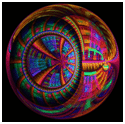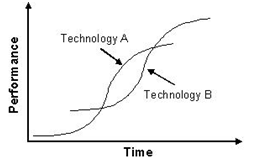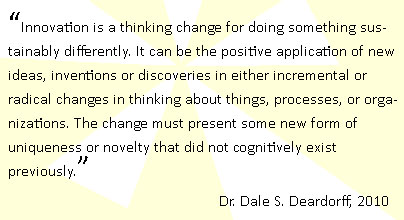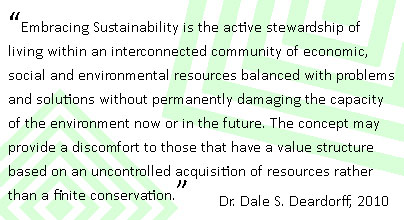|
Leading Innovation Patterns, Trends & Themes to Create Next Generation Ideas

As we look at the new leadership challenges that will face us in 2012, Innovation is the buzz word we continue to hear as the answer. Innovation and Change are linked together in any future based mindset or leadership mental model. This leadership model will also contain needs for sustainable organizational growth to provide enterprise value. Leaders, Innovators and Idea Practitioners generally agree that increasing innovation in their organizational cultures requires them to foster and spread their organization’s innovation capacity across their current and future functions and processes.
It’s no longer an option to fall short of your goals, objectives and potential and still survive. Great ideas are going to be required in all areas and your ability to channel the synergies of everyone in your organization will be necessary. No matter how big or small your organization is, you will need a systemic and holistic path forward. This path requires leaders to create an awareness and understanding of the organic nature of innovation opportunities as they appear. Potentially more confusing for leaders of innovation will be knowing which patterns, themes and trends may contain the new ideas required to lead them to a measurable and sustainable future.
Leading Innovation for the next generation of ideas will also require the ability to create liquid networks and capture viral opportunities to embrace collaborative partnerships and utilize the global brain. It means you must relearn how to resolve wicked problems nested with contradictions, paradox and complexity. Overhauling this type of mindset is easier said than done and those Leaders who become “Learners” will find strategic fits for their organizations.
Additionally, the need to discard traditional assumptions and embrace new perspectives, skillsets and thinking beyond the obvious can help leaders create a positive environment of change and continuous improvement. These will be required to improve effectiveness, efficiency to see adoption, incremental change and revolutionary new ways of thinking.
 Leading Innovation Leading Innovation
Leading Innovation is the systemic process of creating the organizational openness to innovative systems, approaches, minds-sets and ideas to successfully shape future value. It is based on organizational dilemmas, contradictions and paradoxes that may be unpredictable at times creating a dynamic framework to manage disruptive and sustaining innovations. The struggles that occur for most leaders are based on Innovation Return on Ideas ROI(s). This requires enabling a strategic process to also realize a positive potential from a Return on Inspiration and Imagination.
First let’s clarify some of the potentially confusing terms and overlapping mental models of understanding.
Innovation is a process or action that starts with a “need”. It allows the introduction of some new form of uniqueness and novelty through creation of new ideas or reformulated idea structures. It generally uses creativity tools that allow the creation of a new thought pattern which did not exist previously and requires a verification or check against the initial need.
Creativity is the individual or organizational skill to generate or recognize ideas, alternatives, or possibilities that may be useful in solving problems, communicating with others, and entertaining ourselves and others.
Leading Innovation is the systemic process of creating organizational openness to innovative systems, approaches, mind-sets and ideas to successfully shape future value.
Leading Innovation ROI is the strategic leadership process to enable and realize a positive potential from a return on Ideas, Inspiration and Imagination.
Using these operational definitions will allow us to clearly see a difference between innovation and creativity and how they may be confusing when used interchangeably. Additionally, we can see how closely connected Innovation and Leadership are because they both suggest a break with the norm or status quo. To balance this dichotomy between the two requires helping formulate the strategy for people, the environment and the thinking. Many times this is based upon being able to ask the right questions and pose them in an open ended way allowing others to think freely.
As an Innovation Leader, you must be quick to recognize and use both errors and good ideas to keep moving forward, creating openings for action regardless of the circumstances. This means you must understand how to be responsive without being over reactive and get your people immersed in current and future organizational problems and challenges. The human capacity to invent and create new ideas is universal among everyone. By removing the barriers to the people, process, and inertia issues you can help create and construct the right environment for innovation. Don’t forget to challenge your people to be creative, expect it from them continuously and have them show it to you.
A successful leadership strategy is to use Innovation Patterns, Trends and Themes to anticipate the future based upon the past. This philosophy has been successful for many organizations and is used regularly to predict the next technical evolution to your market space and products.
As an example of these three idea philosophies let’s strategically look at creating ideas for new cars, if they were broken out in the following new idea areas.
- New Car Patterns = Safety, Cost, Fuel efficiency, Entertainment
- New Car Trends = 2 vs. 4 door, 1.3-1.5 vs. 1.6-2.0 litre, hybrid 100 mpg vs. standard 24-52 mpg
- New Car Themes = Sporty, compact, 4 Wheel Drive, Concept, SUV’s, Pre-Owned
As you can see, the type of ideas generated from each of these areas can be very different from the others. All of these areas have the possibility to help stimulate and inspire new ideas that could be beneficial to your market space and value. The use of systemic process based innovation tools and methods can also help you brainstorm a highly structured and disciplined “inside the box” approach to new idea generation.
Most new ideas that Leaders are focused on in modern organizations are based on connecting patterns that are uninspired, impractical or just stepping stones to mediocrity. To truly lead inspiration requires looking beyond our assumptions, contradictions, paradoxes and traditional mind-sets by creating new idea patterns.
 Innovation Patterns Innovation Patterns
History repeats itself as we described previously and an innovation pattern allows you to anticipate the future based upon the past. The use of systemic patterns can help liberate your thought process moving away from existing concepts and assumptions. Put another way, “Function Follows Form” (FFF). By this, we mean that a new pattern of reasoning can be established based on tasks, methods and knowledge that frequently appear together based on their anticipated behaviors.
By using a systemic innovation approach, you can manipulate these components, attributes or features using one of five patterns to reapply them. These can ultimately become new thinking tools, which can create a new format or template of innovation thinking. Research indicates that successful innovations fit into at least one of five patterns. Additionally, patterns can help you predict a new product or service prior to the appearance of customer signals or indication of your market demands.
The 5 patterns for Systemic Innovative Thinking (SIT) are:
- Subtraction – Remove a component or feature from the system, preferably an essential one making it less complex at the same time satisfying the customer need better. (Example is dehydrated soup mix where water was subtracted)
- Multiplication – Add or make a copy of a component or feature from the system but change it in some counter-intuitive way. Move from a quantitative change to create a qualitative change. (Example is a Gillette razor with 5 multiple blades)
- Division – Split an existing system into multiple individual components reconfigured in an unanticipated way preserving the characteristics of the original. Take a process and rearrange the steps to create a new configuration. Can be either functional or physical division. (Example is Yahoo where they have separate functions for their browser, messenger, mail, sports, movies which can all work independently)
- Task Unification – Assign a new task to a system component, attribute or feature to perform a new function plus its existing function. Fuse two tasks into a single component performing the task of the pattern and environment. (Example is defrosting wires in rear car window used as antenna).
- Attribute Dependency Change – Use attributes of the product or service instead of the components. Take two attributes and create a dependency between two unrelated attributes of a single pattern. (Example is Windows media player program that plays either audio .mp3 or video .avi files depending on the original file format.)
The story from 3M in 1968, where a research scientist was able to fail in an initial attempt to create a tape and ultimately created post-it notes, is one example of the use of these patterns. Dr. Spence Silver was unable to get a new adhesive to stick to the backing of a new tape design. However, in 1973, Art Fry, another 3M employee, applied the low tack adhesive to some scrap paper and used these as bookmarks for his church choir hymnal. The new value was discovered 6 years after its initial finding by using a process of Task Unification.
We see that the use of patterns can be very impactful for leveraging new ideas based upon thinking divergently in a systemic method. Additional opportunities can exist when you use Trends and Themes to enhance your ability to create new ideas.
 Innovation Trends Innovation Trends
A Trend is a repeated, long term re-emerging influence of continued interest that allows you to predict the opportunities of the future based upon the past. And believe it or not, Innovations do have trends that repeat themselves over time. The technique of trend spotting allows you to map out general directions of influence that have been successful previously and that can continue to be beneficial in the future.
Identifying innovation trends can have a profound impact on your business and society over the next 3-5 years. By this, we mean that recognition of past “Actions” or “Behaviors” that were previously successful can be applied today to help you be innovative. Almost any web search for innovation trends will lead you to a listing of areas that others are predicting will be your next, new ideas. Some of these trends are valid and others are questionable.
In 1981, I sampled my first McDonald’s McRib sandwich. I can tell you it was not the best barbeque sandwich I had experienced. Hearing that it was going to be discontinued in 1985 was really not a concern to me because it was seen by me as a failure.
Then in 1989, it was reintroduced which led to the addition of the McRib Jr. in 2000 which was a smaller version on a hamburger bun with two pickles which only lasted briefly. Then in 2005, the original McRib was once again discontinued. In 2006, it was continued in short limited periods of time in specific American market locations. In 2008, it was introduced internationally to Hong Kong and Japan. On October 24th 2011 we have had the reappearance of this restructured meat sandwich again.
Each time McDonalds has reintroduced the product, they have tried to make it better and for over 30 years they have continued to pursue a financial value profit. According to published financial statistics, they made a 4.8% increase in sales in their Nov. 2010 reintroduction.
So why does a very smart company like McDonalds continue with a product that I see as a loser? Because McDonald’s knows that as a strategic short term deployment product they can continue a trend and theme which is a financial winner.
Previous innovation Trends can be used to create new ideas to make “things”:
- Lighter – Things that weigh less than previous designs
- Cheaper – Things that are less expensive than previous designs
- Simpler – Things that are less complex than previous designs
- Faster – Things that operate or function quicker than previous designs
- Easier – Things that operate or function with less effort
- Healthier – Things that are better for your health
- Hyper logical – Things that are intuitively logical
The previous 7 trends have been used over and over in product and process innovation successfully by many companies. These new ideas can easily be seen in high technologies such as our Internet speed. It started with basic dial-up and then was upgraded to broadband DSL. Now high speed DSL is provided via satellite, the phone lines or your cable TV provider based on the philosophy of “Faster”.
Computers seem to fit many of the trend categories where they have continued to become faster and cheaper in the last 10 years. Today’s computers have new operating systems which have made them easier to operate intuitively. The new web browser technologies from Google, Yahoo and Firefox remember where your previous keystrokes took you. This memory can be used to predict new web locations they anticipate you may want to visit based upon a hyper logical mindset.
By reviewing a trend, you are looking for a consistent influence that has allowed your field to grow in the past. Many times reviewing your company’s history or the history of your competitors, can help you identify industry specific and applicable trends to generate new strategic ideas. Using any one of these trends as a strategic “trigger” for your innovation teams to pursue can help you create new ideas and impressive results.
 Innovation Themes Innovation Themes
An “Innovation Theme” supports and promotes a market-oriented, consumer-driven innovation idea for industry that will improve the competitiveness and profitability of your innovation strategy. Many times an innovation will jump from one industry to another as its value becomes obvious to the new industry. Specifically, these themes support the development and adaptation of new and leading products or processes. Additionally, it can increase your industry’s ability to anticipate, identify, develop and capture new and unique market opportunities. There are 10 separate innovation themes that can be used as an area focus, central focus or broad focus framework for creating new ideas:
- Consolidation – merge or consolidate with partners or competitors into a bigger, more powerful entity.
- Bypassing – cut out or bypass the middleman by creating a direct-to-customer model
- Value Migration – shift to a more profitable industry or field of product/process
- Teaming Up – create alliances or partnerships replacing vertical integration with alliances to create an end product
- Digital Delivery – allow online or digital access by providing online shopping, purchasing, and access to goods and services
- Deep Connections – encourage emotional connections beyond customer functional value
- ASAP – deliver information, service or product faster to the customer
- Customization – let the customer design end user specifications, mass personalization where new profit is available
- Mass Market – extend market from a specific customer to larger customer base.
- Fix-it-for-me – solving a customer need or problem with a comprehensive solution or breakthrough product.
You can also create your own industry specific themes which are directly linked to previous innovation strategies or you can look outside your industry for new connections. Often an innovation will jump from one industry to another as its value becomes clearly obvious. If an innovation theme is present in your specific industry, consider a new innovation strategy based upon a theme that has been previously beneficial to your organization or enterprise. Never assume you have reached the end of the line with an Innovation theme. Based on historical evidence, it is much more likely that your organizational imagination will run out before the theme does.
 Next Generation Ideas Next Generation Ideas
Next Generation ideas are the type of ideas that you can create which will jump the innovation S-Curve from one technology market, product type, process type or service. These next generation ideas focus on resolving “wicked” complex problems and are based upon dramatic challenges to their logical assumptions. Many times they must be explored from unusual points of view because they can be future based.
Many times these types of ideas must come from adjacent technologies or mindsets that merge thinking communities to provide new idea networks. Examples of these are liquid networks where people with different backgrounds can come together to freely exchange ideas. Liquid networks are synchronous and can seamlessly flow into new spaces without requiring an official structure such as social networks that can immediately organize and disband themselves.
Organizations have realized that the best answer to their problems may be owned by someone else. The traditional format of owning your intellectual property is being challenged by Nike who has formed the GreenXchange program. This strategic company program has allowed Nike to release all of its patents under a standardized, pre-negotiated contract for others to use in non-competitive fields. Ultimately, this allows Nike to share their ideas with others and at the same time reduce the costs of legal fees associated with trying to manage and protect their Intellectual property.
DARPA is currently engaged in a next generation Unmanned Aerial Vehicle (UAV) program where they have open sourced the opportunity in a contest. The audience gets to provide comments and the winning finalists get to participate in a fly-off competition. Participants are allowed to show videos of their ideas and progress on YouTube.
Examples of next generation ideas are:
- Postal service carriers used to monitor environmental weather with air quality measurement devices they carry as they deliver the mail.
- Projected Sound technology used to create advertising commercials in store “hot zones” under test at Wal-Mart.
- Virtual keyboards and monitors that exist only via projected images eliminating traditional hardware.
- Robotic exoskeleton arms that can be worn by humans to easily lift 300-500 pounds as easily as a box of breakfast cereal.
Each of these ideas does more than improve the previous ideas. It moves technology into a new innovation S-Curve eliminating previous market competition and becoming the new owner of the market share. When we talk about the innovation S-Curve we mean a static mathematical model seen below. It is used to analyze technology cycles which can predict the introduction, adoption and maturation of your innovations.

Innovation implementations can be strategically overlapped as illustrated in the figure above. This philosophy is what Apple has benefited from with their technology product releases. Apple has woven one change on top of another allowing them to own their brand markets and preventing others from gaining an upper hand. There are many ways to create new ideas based upon historical predictions of what has been successful and beneficial in the past. These new ideas are balanced by the complex challenges organizations and leaders encounter each day.
Innovation Leaders must create strategic plans based upon their organization’s innovation vision. Without this direction there is no passion for creating new ideas, only unconnected glimpses into opportunities. Measurements of innovation must contain both quantitative and qualitative measures with clear impacts to cost, schedule, customer satisfaction, knowledge and ultimate value. The basic formula of any great company is a recognition of its impact on the people, environment and thinking.
Innovation is a positive response to these and can help create a dramatic change offering new opportunities. To successfully lead innovation, requires following a documented “innovation process” to spearhead the effort. This process must start with a perceived or actual customer or stakeholder “strategic need”. New ideas without homes are usually not beneficial to your organization and generally bring little value to the company’s financial bottom line.
The next step requires using a structured innovation process with systemic tools for developing new ideas. Saying you have a process for innovation is no longer enough. It must be put down on paper capturing the holistic steps and made available to everyone in the organization. Leaders of innovation must know this process and articulate how it works for others to recognize its utility. Tools and methods for creating new ideas should be taught to anyone and everyone who desires the skill. Learning and relearning from others should include both the success stories and the grand mistakes.
Finally, leaders must be connected to a “Value Chain” associated with creating ideas based upon new relationships to inspire product, process and service innovations. Innovation and Leadership are joined together on the path to your organizational success. Saying your “Innovative” is not a leadership strategy and the cliché of thinking outside the box is a fallacy. What is needed is the ability to think forward by challenging your organizations assumptions by looking at things from a fresh, systemic innovative angle.
Dr. Dale Deardorff |










